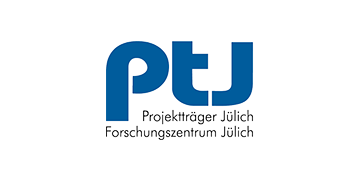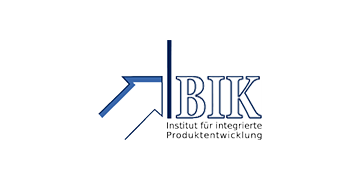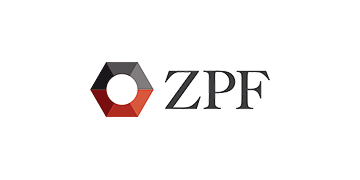| Theme | Process monitoring, Industry 4.0 |
|---|---|
| Project title | Increasing the efficiency of an aluminum melting furnace (ALSO 4.0) |
| Project duration | 01.06.2017 – 30.11.2020 |
| Results | |
| Download | |
| Press release |
In order to automatically determine the state of an aluminum melting furnace, the IPH develops a 3D camera system. At present, the amount of molten aluminum is determined manually: at regular intervals, a worker opens the oven door and checks the state of the aluminum. A lot of heat is lost. Because the melting point of aluminum is about 660 ° C, the temperature in the melting furnace must be between 700 and 1000 °C.
The aim of the research project is to determine the state of the aluminum without opening the oven's door. This significantly reduces the energy loss and contributes to increasing the energy efficiency of the cast aluminum industry. The camera system must be shielded from the extreme temperatures inside the furnace.
Publications about the project
Aluminum melting ovens have a very high energy consumption. Opening the oven doors for the visual monitoring of the melting preocess to be carried out by the operator increases the energy requirement and endangers occupational safety. To increase the energy efficiency of the oven, an optical measurement system was developed that monitors both the melting process and the condition of the melt pool. At the same time, the degree of automation was increased and occupational safety improved.
process optimization, energy efficiency, optical process monitoring
Ever-stricter requirements for the quality of the finished product and the energy consumption pose difficult challenges for industry, especially the automotive industry. The market demands high-quality components at a reasonable cost.
Modern technologies and innovative methods help to meet this challenge. Process monitoring has become a key technology and enables the improvement of safety, quality, and efficiency in various fields. Until recently, production ? from the design of the aluminum melting furnace to the daily process ? relied largely on tra-ditional methods and experience.
This thesis investigates a new method for monitoring a melt-ing process and shape changes in the furnace by means of optical sensors for the first time. To this end, this thesis deals with an innovative analysis algorithm for using an optical meas-uring system that is able to monitor the melting block despite the red-hot furnace walls.
melting process, analysis algorithm, light-field camera, process monitoring
The melt level and oxide layer quantity in an aluminum melting furnace cannot be monitored by contact sensors, since the melting bath is not accessible due to the high holding temperature (above 600°C). Therefore, the method of monitoring the melting bath by means of optical sensors is investigated for the first time. For this purpose, suitable optical measuring systems can be applied which will be able to record the melting bath. The height change of the melt is to be elaborated by means of image analysis and any oxide layer on the bath surface is to be detected.
aluminum melting furnace, metling bath monitoring, oxide layer
Constantly increasing quality requirements and ever-stricter conditions pose difficult challenges for the foundry industry. They must produce the high-quality components demanded by the market at a reasonable cost. Modern technologies and innovative methods help to master this challenge. Until recently, production, from the design of the aluminum melting furnace to daily process, relied largely on traditional methods and experience. However, important data and information about the melting process—for example, the temperatures and the shape of the aluminum block in the furnace—can hardly be obtained with conventional experimental methods, as the temperatures exceed 700 °C. Therefore, this research project investigates the method of monitoring a melting process by means of optical sensors for the first time. The purpose of this paper is to predict the surface shape of the block during the melting process, as it is not possible to maintain a constant monitoring due to the heat and energy loss during measurement (Einsatz einer Lichtfeldkamera im Hochtemperaturbereich beim Schmelzvorgang von Aluminium. To generate the necessary data, a 3D light-field camera is installed on top of an aluminum melting furnace in order to monitor the process. The basic idea is to find a general method for curve modeling from scattered range data on the aluminum surface in 3D space. By means of the (x, y, z) data from the 3D camera, the aluminum surface is modeled as a polynomial function with coefficient derived using various interpolation and approximation methods. This study presents an attempt to find the optimal polynomial function model that describes the aluminum surface during the melting process by interpolation or approximation methods. The best method for curve fitting will be extended and implemented for surface modeling.
melting process light-field, polynomial function, interpolation, approximation, aluminum surface
The melting process in an aluminum melting furnace cannot be monitored by contact sensors, since the furnace is not accessible due to the high temperatures (more than 700 °C). Therefore, monitoring the melting process by means of optical sensors is investigated for the first time in this research project. This article deals with an innovative optical measuring system that is able to monitor the melting bridge despite the red-hot furnace walls. For this purpose, a light-field camera is installed on top an aluminum melting furnace in order to monitor the process and to control a targeted heat input into the melting furnace using a rotatable burner. The light-field camera used can capture a 3D point cloud with only one image. To achieve this, a separate field of lenses is placed between the image sensor and the main lens, projecting a virtual intermediate image onto the actual image sensor for further data processing. In addition, a self-developed image analysis program serves to monitor the height variation of the aluminum block and any melting rest on the melting bridge of the furnace.
Thus, the energy efficiency of the aluminum melting process could be increased by 15 % and the melting time reduced by almost 20 minutes by means of online monitoring.
light-field camera, process monitoring, image processing, melting process, energy efficiency







